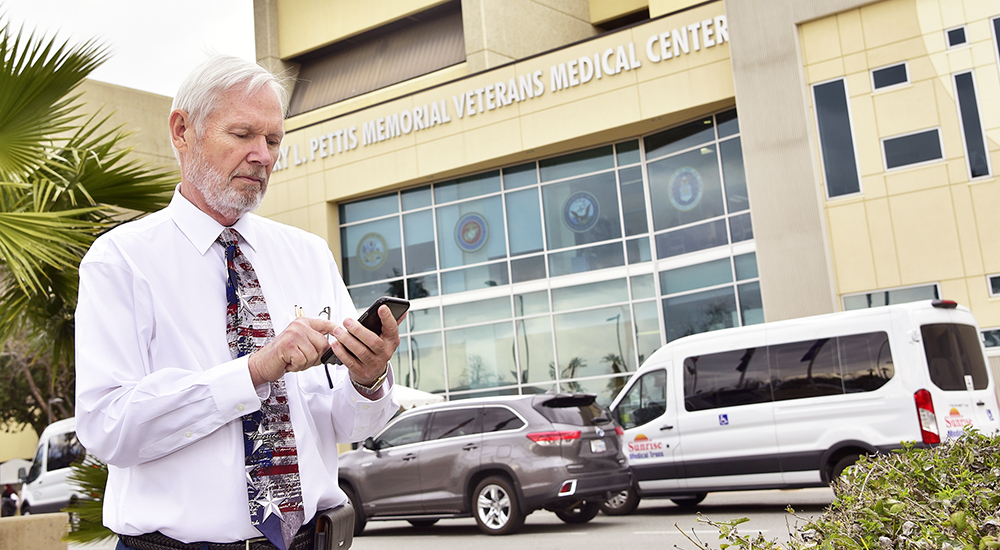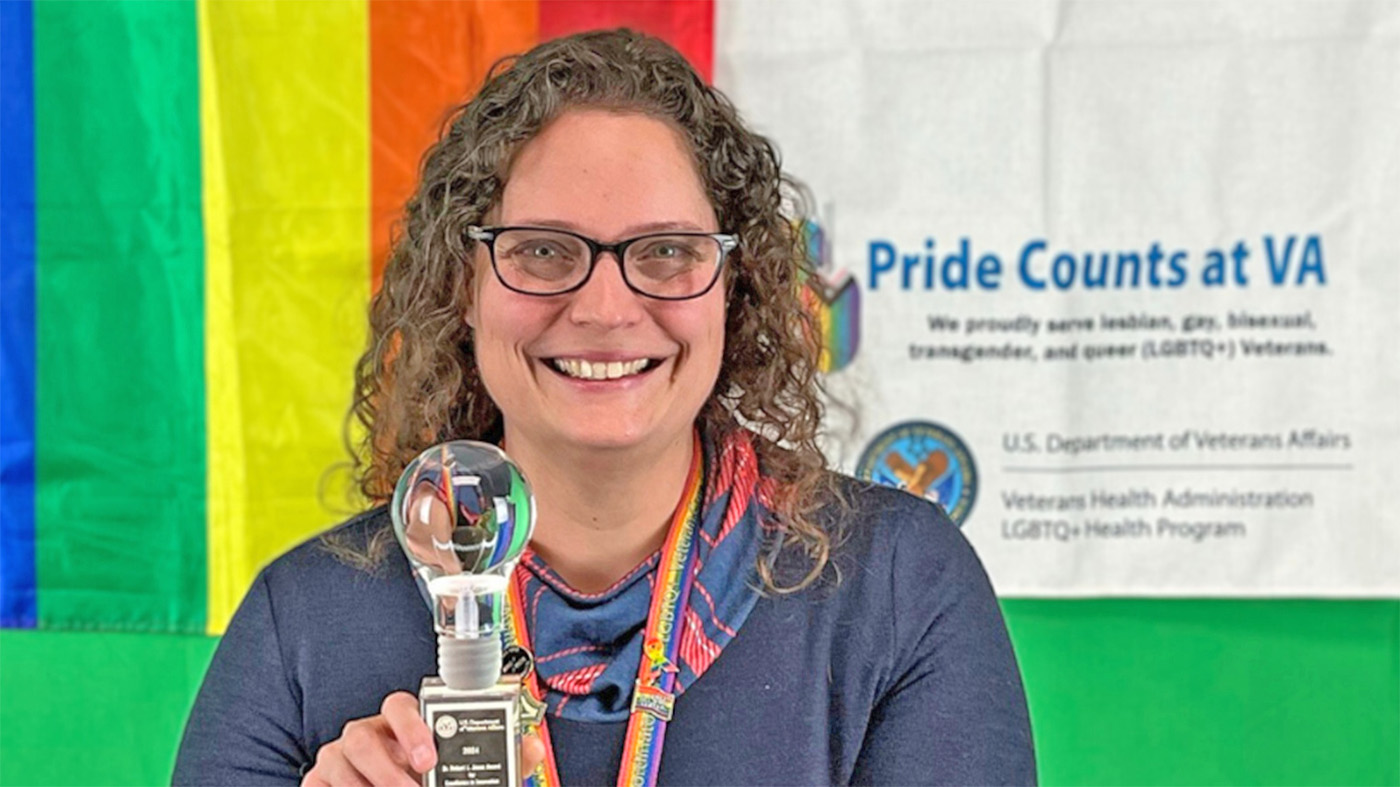Vietnam-era Veteran James Preston (pictured above) uses his mobile phone much like any other person. He reads his email, surfs the net, streams video, even plays a game or two. Like 5.6 million other Veterans, he also gets his VA health care scheduling reminders through VEText, an interactive mobile solution to remind Veterans of upcoming appointments via unsecured text messaging.
Facility and clinic location may be Included in VEText
VA launched VEText in March 2018 and since has made enhancements along the way. Most recently, VA can now send facility and clinic location in their unsecured text message appointment reminders. This feature improves the experience for Veterans because it offers them more detailed information about their scheduled appointments.
Deanna Callahan is an innovation specialist and the National Program Manager for VEText. Working out of the VA Loma Linda Healthcare System, she and her team recognized the community standard for health care scheduling was text message appointment reminders – and they wanted to bring that capability to VA.
“Text message appointment reminders were lacking in VA. We were only using phone calls, ‘robo’ calls, and postal mail and we wanted to modernize our efforts to not only bring text message appointment reminders but go above and beyond and positively affect the No Show rate.”
What’s good for Veterans is good for VA
And the No Show rate that Callahan wanted to impact? That has decreased from 13.7% to 11.7% since the VEText deployment. Furthermore, an overwhelming majority of Veterans like the enhanced access. Only 4% have opted out of the VEText program.
Great Beginnings
VEText is configured locally by each facility to send messages about appointment reminders. Callahan worked with VHA’s Office of Veterans Access to Care (OVAC) to plan, resource, and deploy this enhanced capability across the country.
Since the beginning, James Preston has been one of their staunchest advocates. Preston helped test the system before full implementation and offered critical recommendations to improve the effort. “At first, the rules were very encompassing, and the text message wasn’t as intuitive as I had envisioned.
“Here at the Loma Linda VA Medical Center, Veterans still had to use the information desk to find out exactly where they needed to go. We improved VEText to give specific instructions. Now it’s almost perfect because it provides all the necessary information for the Veteran.”
Preston may be 71 years old, but he operates his mobile device as well as any millennial or Gen-Xer. His role in helping to enhance access and improve the experience for Veterans has been terrific.

Topics in this story
More Stories
Bob Jesse Award celebrates the achievements of a VA employee and a team or department that exemplifies innovative practices within VA.
The Medical Foster Home program offers Veterans an alternative to nursing homes.
Watch the Under Secretary for Health and a panel of experts discuss VA Health Connect tele-emergency care.









like in my region which is also developing, almost all forms of payments both sector to the government and to the private are done online, it is very revolutionary and very helpful to the community
Great photograph!!!